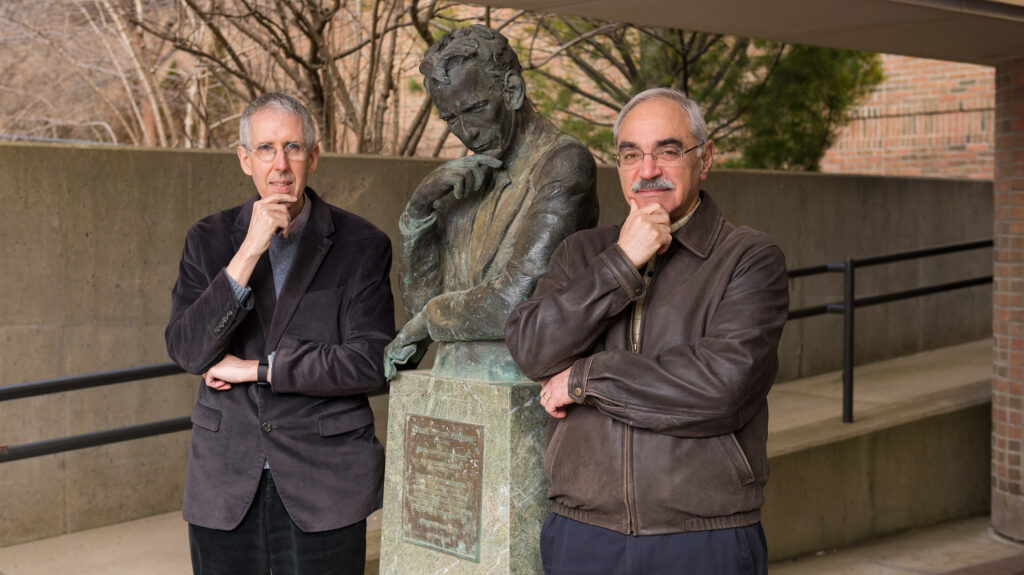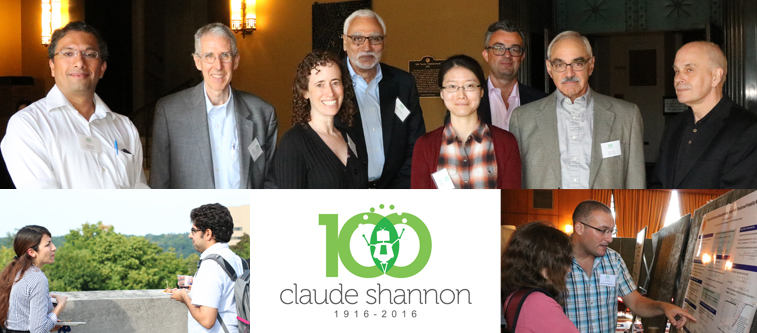Claude Shannon: Father of the Information Age
Claude Shannon – Father of the Information Age
Where did digital communication begin?
The most famous person you’ve never heard of
Claude Shannon’s legendary 1948 paper, “The Mathematical Theory of Communication” unveiled the vast potential for digital communications and inspired virtually all of the work in digital communications that followed.

Also famous for his work on cryptography, the sampling theorem, and the discovery of the relevance of Boolean algebra to logic circuit design, he is considered to be one of the people most responsible for ushering in the digital age.
Shannon is also a University of Michigan alumnus, receiving bachelor’s degrees in electrical engineering and mathematics in 1936. He then began his graduate students in at Massachusetts Institute of Technology the same year, answering a job announcement in their electrical engineering department to operate an analog machine. He completed his PhD in 1940.
Learn more about Claude Shannon in these U-M stories listed below, as well as the movie, The Bit Player (2018), and the biography, A Mind at Play: How Claude Shannon Invented the Information Age (2017).
As the creator of the “bit,” Claude Shannon became known as the “father of the digital age”—the man responsible for technology that evolved into today’s computers and other digital technology. Here, his biographers tell the story of his U-M years. He hailed from Gaylord, Michigan. At Michigan, Shannon took some of the earliest courses courses offered in the theory of wireless telegraphy and telephony, which introduced him to critical ideas related to his later work. A job posting on a bulletin board led him to work on a differential analyzer at MIT, where he would earn his PHD.
Claude Shannon: information icon
Early theoretical solutions led to practical applications that continue to power our digital world.
The Elegant Philosophy of Ones and Zeros
A 1936 master’s thesis written by Claude Shannon changed the computing world overnight. Shannon’s insight seemed to come out of nowhere, but collections from the Bentley archive show how the genius idea grew from a revamped engineering campus and one elective class.

Claude E. Shannon Statue Dedication at the University of Michigan
At noon on a beautiful day November 9, 2001, approximately two hundred members of the University of Michigan community attended the dedication of the statue of Claude E. Shannon. The statue is located at the west entrance to the EECS Building on the North Campus of the University of Michigan in Ann Arbor, Michigan.
Claude Shannon centennial celebrants recall U-M grad’s advances, societal impact
The greater mathematical community hails University of Michigan alumnus Claude Shannon as the “Father of Information Theory,” for revealing the potential for digital communications and inspiring advancements that followed.
But even Shannon, himself, couldn’t remember where the theory originates from.
“I wanted to work on information, the measurement of information,” said Shannon, who died in 2001. “I had already read (Ralph) Hartley’s paper … it had been an important influence in my life. I think I read it at the University of Michigan.”

U-M Shannon Centennial Symposium Celebrates the father of information theory
Researchers from around the nation gathered at the University of Michigan in Ann Arbor to celebrate the 100th birthday of alumnus Claude E. Shannon at the Shannon Centennial Symposium on September 16, 2016. The event was co-organized by Al Hero (the John H. Holland Distinguished University Professor and R. Jamison and Betty Williams Professor of Engineering), Dr. Hye Won Chung, Dave Neuhoff (the Joseph E. and Anne P. Rowe Professor of Electrical Engineering) and Prof. Sandeep Pradhan.
 MENU
MENU 
